We need your consent to use the individual data so that you can see information about your interests, among other things. Click "OK" to give your consent.
ASTM E1515-14
Standard Test Method for Minimum Explosible Concentration of Combustible Dusts
STANDARD published on 1.12.2014
The information about the standard:
Designation standards: ASTM E1515-14
Note: WITHDRAWN
Publication date standards: 1.12.2014
SKU: NS-581154
The number of pages: 9
Approximate weight : 27 g (0.06 lbs)
Country: American technical standard
Category: Technical standards ASTM
The category - similar standards:
Annotation of standard text ASTM E1515-14 :
Keywords:
dust explosion, minimum explosible concentration,, ICS Number Code 13.230 (Explosion protection)
Additional information
| Significance and Use | ||||||||||
|
5.1 This test method provides a procedure for performing laboratory tests to evaluate relative deflagration parameters of dusts. 5.2 The MEC as measured by this test method provides a relative measure of the concentration of a dust cloud necessary for an explosion. 5.3 Since the MEC as measured by this test method may vary with the uniformity of the dust dispersion, energy of the ignitor, and propagation criteria, the MEC should be considered a relative rather than absolute measurement. 5.4 If too weak an ignition source is used, the measured MEC would be higher than the “true” value. This is an ignitability limit rather than a flammability limit, and the test could be described as “underdriven.” Ideally, the ignition energy is increased until the measured MEC is independent of ignition energy. However, at some point the ignition energy may become too strong for the size of the test chamber, and the system becomes “overdriven.” When the ignitor flame becomes too large relative to the chamber volume, a test could appear to result in an explosion, while it is actually just dust burning in the ignitor flame with no real propagation beyond the ignitor. 5.5 The recommended ignition source for measuring the MEC of dusts in 20-L chambers is a 2500 or 5000 J pyrotechnic ignitor.5.6 If a dust ignites with a 5000 J ignitor but not with a 2500 J ignitor in a 20-L chamber, this may be an overdriven system.5 In this case, it is recommended that the dust be tested with a 10 000 J ignitor in a larger chamber, such as a 1 m3-chamber, to determine if it is actually explosible. 5.7 The values obtained by this test method are specific to the sample tested (particularly the particle size distribution) and the method used and are not to be considered intrinsic material constants. |
||||||||||
| 1. Scope | ||||||||||
|
1.1 This test method covers the determination of the minimum concentration of a dust-air mixture that will propagate a deflagration in a near-spherical closed vessel of 20 L or greater volume. Note 1: The minimum explosible concentration (MEC) is also
referred to as the lower explosibility limit (LEL) or lean
flammability limit (LFL).
1.2 Data obtained from this test method provide a relative measure of the deflagration characteristics of dust clouds. 1.3 This test method should be used to measure and describe the properties of materials in response to heat and flame under controlled laboratory conditions and should not be used to describe or appraise the fire hazard or fire risk of materials, products, or assemblies under actual fire conditions. However, results of this test may be used as elements of a fire risk assessment that takes into account all of the factors that are pertinent to an assessment of the fire hazard of a particular end use. 1.4 The values stated in SI units are to be regarded as standard. No other units of measurement are included in this standard. 1.5 This standard does not purport to address all of the safety concerns, if any, associated with its use. It is the responsibility of the user of this standard to establish appropriate safety and health practices and determine the applicability of regulatory limitations prior to use. Specific precautionary statements are given in Section 8. |
||||||||||
| 2. Referenced Documents | ||||||||||
|
Similar standards:
Historical
15.2.2012
Historical
1.2.2014
Historical
1.7.2011
Historical
1.6.2013
Historical
1.4.2008
Historical
1.10.2009
We recommend:
Updating of laws
Do you want to be sure about the validity of used regulations?
We offer you a solution so that you could use valid and updated legislative regulations.
Would you like to get more information? Look at this page.


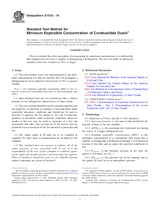
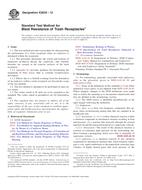 ASTM E2639-12
ASTM E2639-12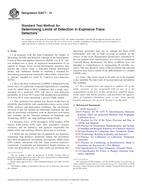 ASTM E2677-14
ASTM E2677-14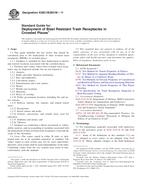 ASTM E2831/E2831M-11..
ASTM E2831/E2831M-11..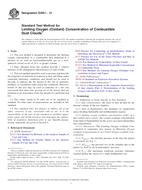 ASTM E2931-13
ASTM E2931-13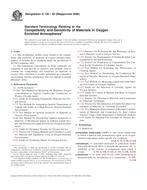 ASTM G126-00(2008)..
ASTM G126-00(2008)..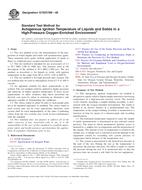 ASTM G72/G72M-09..
ASTM G72/G72M-09..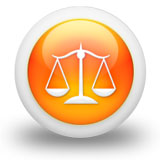
 Cookies
Cookies
